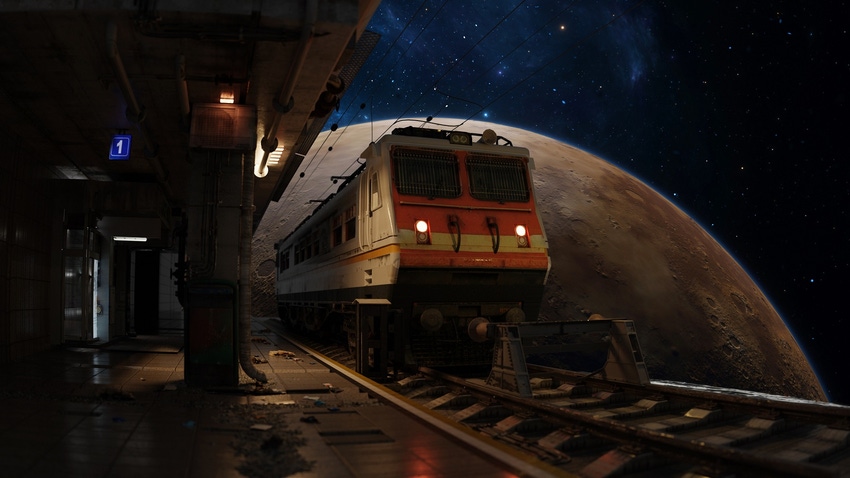LunA-10 Plans a Train on the Moon
Northrop Grumman is developing plans for a moon-based railroad as part of DARPA’s LunA-10 study of the possibilities of building a lunar infrastructure.
April 9, 2024

At a Glance
- Building infrastructure on the moon.
- Developing plans for a lunar railroad.
Next subway stop, the moon. If we’re going to build roads and buildings on the moon, how about a system for hauling people and goods – an infrastructure of trains and tracks, an actual railroad. The perfect way to celebrate the 200th birthday of the first intercontinental railroad across the US in the 1860s would be to launch a train across the moon.
Northrop Grumman Corporation is making railroad plans. The company has been selected by the Defense Advanced Research Projects Agency (DARPA) to develop the concept of building a moon-based railroad network as part of DARPA’s 10-year Lunar Architecture (LunA-10) Capability Study. The envisioned lunar railroad network will be tasked to transport humans, supplies, and resources for commercial ventures across the lunar surface – contributing to a space economy for the US and international partners.
The LunA-10 study is developing foundational technology concepts that move away from individual scientific efforts within isolated, self-sufficient systems, toward a series of shareable, scalable systems that interoperate.
The Northrop Grumman’s study on a potential railroad will:
Define the interfaces and resources required to build a lunar rail network.
Establish a critical list of foreseeable cost, technological, and logistical risks.
Identify prototypes, demonstrations, and the analyses of a fully operating lunar rail system’s concept design and architecture.
Explore concepts for constructing and operating the system with robotics, including grading and foundation preparation, track placement and alignment, joining and finishing, inspection, maintenance, and repair.
“This investment in key developmental research keeps our technology at the forefront of next generation solutions,” said Chris Adams, VP and GM for Strategic Space Systems at Northrop Grumman, in a statement. “With our proven experience in the integration of complex systems and commercialized autonomous services, we will continue to create lasting change for a sustainable space ecosystem.”
DARPA’s LunA-10 Initiative

Image courtesy of DARPA
DARPA is a research and development agency of the US Department of Defense responsible for the development of emerging technologies for use by the military. The agency’s LunA-10 Capability Study is designed to quickly create new technology ideas shifting from individual scientific projects to shared, scalable systems that work together. The goal is to establish an analytical framework for integrated lunar infrastructure that minimizes lunar footprint and provides commercial services for future lunar users. Here’s more about Northrop Grumman’s broader civil and commercial space capabilities and programs.
While DARPA is a DoD agency, much of its work is aimed at civil programs. DARPA’s LunA-10 initiative aims to identify solutions that can enable multi-mission lunar systems. For 65 years, DARPA has pioneered and de-risked technologies for civil space advancement, from the rocket technology in the Saturn V that took humans to the Moon for the first time, to the recent DARPA-NASA partnership to foster faster space travel to the Moon and beyond with a nuclear thermal rocket engine. LunA-10 continues this legacy by identifying and accelerating key technologies that may be used by government and the commercial space industry, and ultimately to catalyze economic efforts on the moon.
About the Author(s)
You May Also Like





